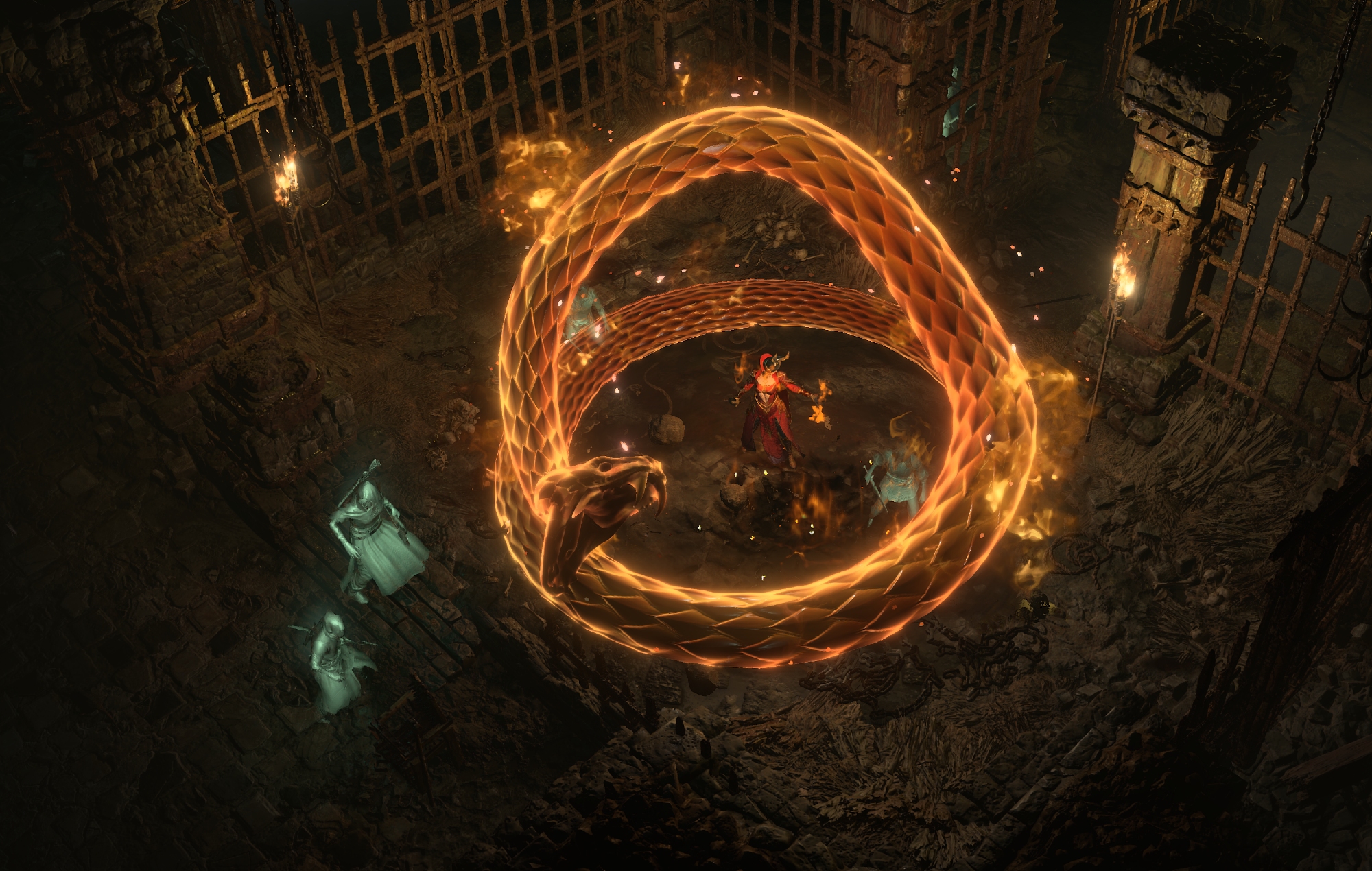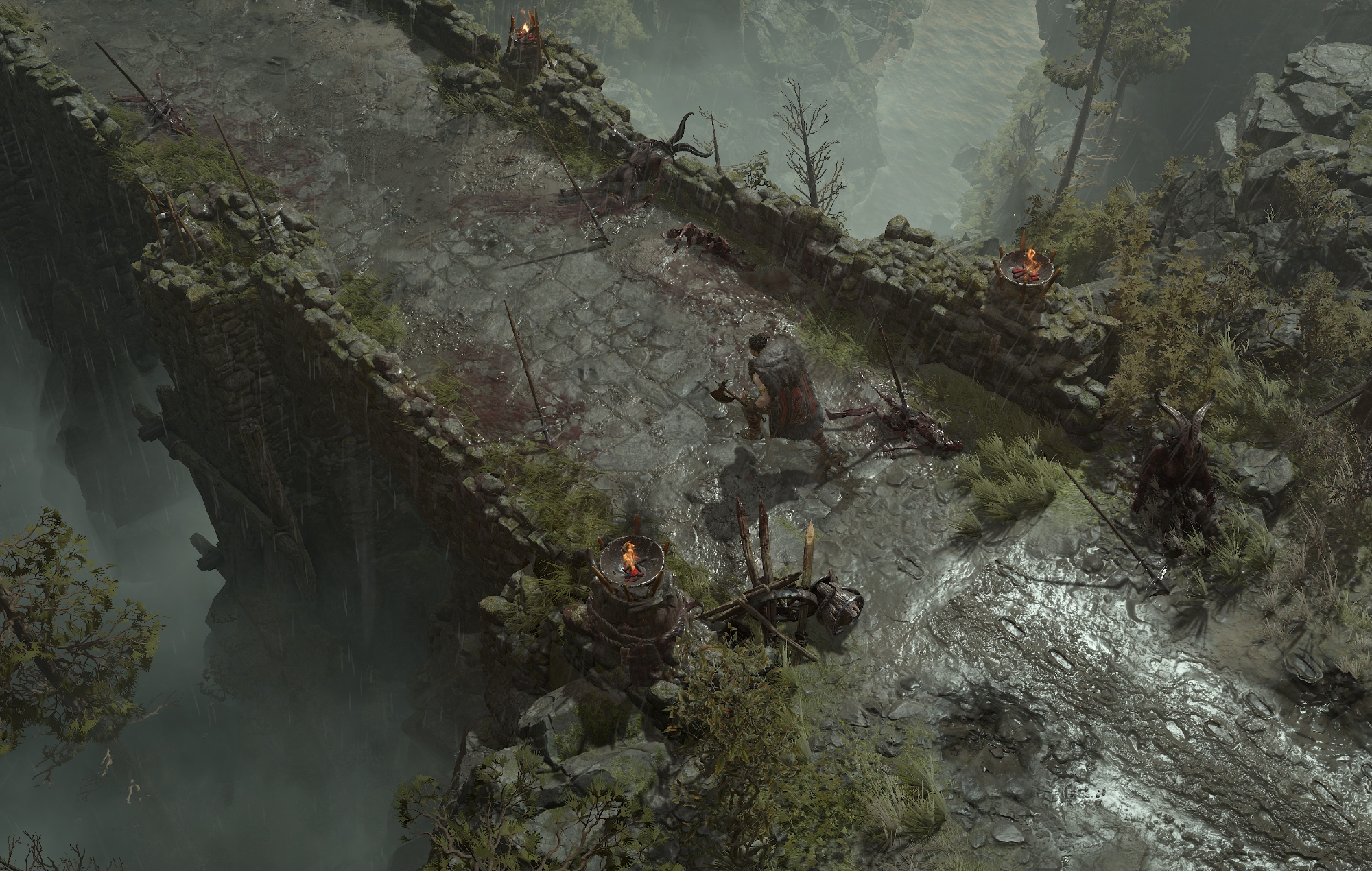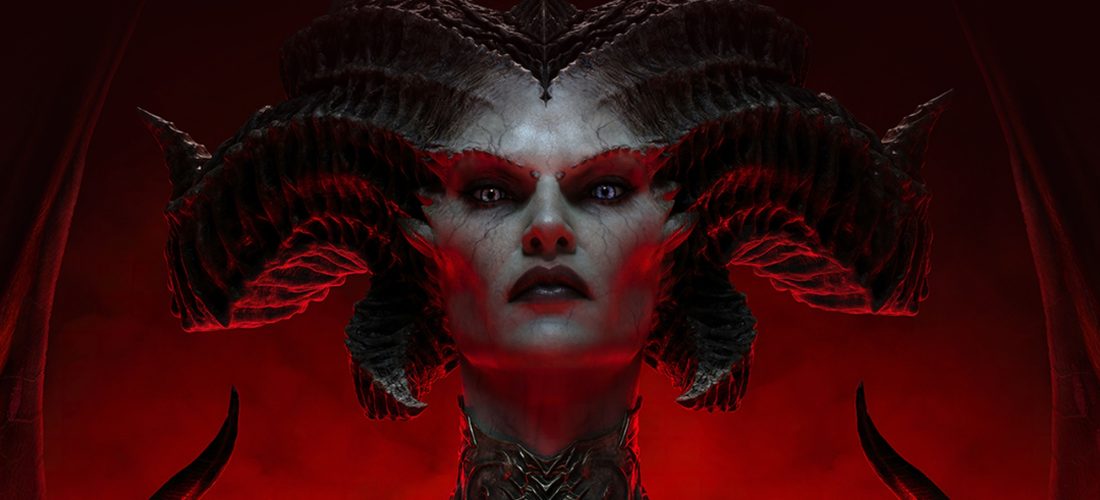‘Diablo 4’ review: diary of a necromancer
for 26 years, Sanctuary has been the kicking post of the Diablo series. Trapped between the warring armies of Heaven and Hell, the Mortal Realm has endured everything from demonic invasions to the occasional rogue angel. Diablo 4, Blizzard Entertainment‘s latest isometric action roleplaying game (ARPG) in the series, does little to improve Sanctuary’s prospects.
In the game’s gory introduction, ritualistic shenanigans set Lilith — the demon mother of Sanctuary — loose upon the realm. As humanity’s latest hero, players spend much of Diablo 4‘s story triaging the carnage Lilith leaves in her wake, pulling at the threads of her machinations until her grand scheme is revealed.
In truth, 90 per cent of these heroics boil down to Doing Violence: over the course of a six-act campaign, expect to bash, burst and behead thousands of enemies, which range from peckish cannibals to lightning-fast vampires and the Lesser Evils of Hell. Gratuitous slaughter has been Diablo‘s motif since it debuted in 1997, and it’s something Diablo 4 revels in — making use of your character’s skills to clear screen-fulls of baddies is a kinetic, frenzied affair that becomes increasingly fun as you sink more hours into your class.

The skills available to you will depend on two things: the class you choose to play, and where you spend your skill points, which are doled out with each level-up. There are five classes to choose from — Druid, Rogue, Sorcerer, Barbarian and Necromancer — and it’s the last one I spent the most time with, which meant commanding hordes of undead warriors and getting creative with the corpses that each enemy leaves behind.
While I’ve traditionally found skill trees in Diablo and other online games to be daunting affairs best left to guides writers, Diablo 4‘s iteration is flexible and easy to tweak, which makes it delightfully easy to play around with. While I spent Diablo‘s early hours making visceral chemical reactions with Corpse Explosion, an incredibly simple re-speccing system meant I felt comfortable mixing things up when my go-to approach started falling short against tougher individual mobs.
Through low-stakes trial and error, I eventually abandoned Corpse Explosion in favour of a homebrewed build that turned the necromancer’s shambling minions into a small army of killers. If not for Diablo 4‘s have-at-it approach to builds, I wouldn’t have found my calling in undead middle-management — which would have been a real shame, because combat becomes doubly brilliant when you’re on a power trip of your own making.

If fiddling around with skill trees isn’t your cup of tea, it’s not mandatory. Playing on World Tier 2: Veteran difficulty is a moderate yet fairly forgiving challenge, which doesn’t need an optimised killing machine to blitz through. This means you’re free to take in the rest of Diablo 4‘s delights at your own pace, including the real star of the show: Lilith.
Sanctuary’s creator is one of Diablo’s most enticing villains yet, a malleable baddie whose matronly sense of duty and commanding charisma are two sides of the same sword. In a departure from the Prime Evils that have terrorised Sanctuary in prior games, Lilith is, despite the horns, a very human villain. Cutscenes with Lilith — whether she’s flexing her seductive powers, grieving, or acting on a vicious cruel streak — serve as the driving force for Diablo 4‘s plot, while one scene in particular will go down as one of Blizzard’s best cinematics to date.
It’s not just Lilith that benefits from Blizzard’s human touch. Diablo 4 pulls back the curtain on Sanctuary, moving from the series from linear stages to an open world where players can pick a direction and run, hoovering up side-quests and optional dungeons as they go. It’s a well-crafted universe — every inch of weathered scenery gives Sanctuary a lived-in weariness, while side quests hammer home daily life in Diablo‘s gothic misery, with tales of children lost to asylums and pacts with demons, which — spoiler alert — don’t always end well.

Combined with dungeons — straightforward Murder Corridors you can spelunk for loot — and world events, there are plenty of reasons for exploring Sanctuary beyond the main quest’s beaten path. In later acts, these side activities are a welcome diversion — fetch quests and thinly-justified chores mean the overarching story suffers from sluggish pacing, which is an easier pill to swallow if you break it up with the odd adventure.
Besides wobbly pacing, my only other issue with Diablo was its auto-save system, which can be oddly punishing if you disconnect. At times, dropping out meant starting entire quests from scratch, sometimes facing setbacks of 20 minutes or more because of an ill-timed error message. If your internet connection is solid (and Blizzard’s servers hold up at launch), this is more of a headache than a full-on migraine; but let this serve as a PSA — don’t ditch a quest until you’re certain it’s wrapped up.
[embedded content]
Ultimately, Diablo 4‘s few issues are easier to take in stride because of the game’s wider triumphs. Though it’s been 11 years since the last mainline Diablo game, the wait has been worth it: with an ocean of class customisation to play around with and a well-realised vision of Sanctuary, Diablo 4 is Blizzard’s gothic fantasy at its most ambitious.
Diablo 4 launches for PlayStation, Xbox and PC on June 6, with Early Access kicking off on June 2. We played on PC.
Verdict
Theory-crafters, lore hounds and newcomers can all find something to love about Diablo 4 — as long as their interests converge on beating demons to death. Gruesomely satisfying combat, expansive skill trees and a bustling open world make Diablo 4 a delightfully gory way to kick off summer, and a must-play for ARPG fans.
Pros
- Lilith is one of Blizzard’s best villains yet
- Classes are ripe for customisation, and encourage experimentation
- Sanctuary successfully makes the jump to open-world, and is packed with things to do
Cons
- The later acts suffer from slow pacing
- Autosaving could be a bit more generous
